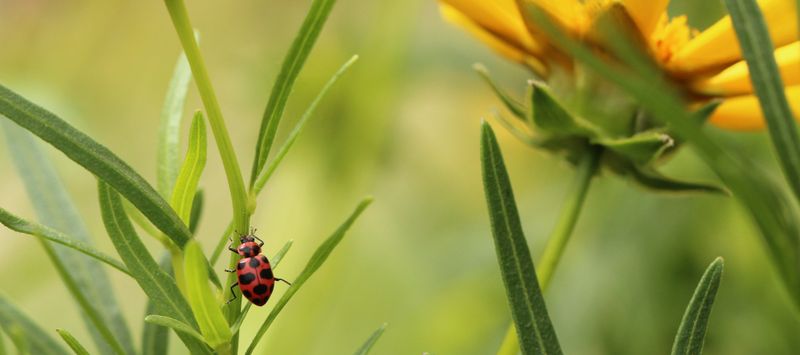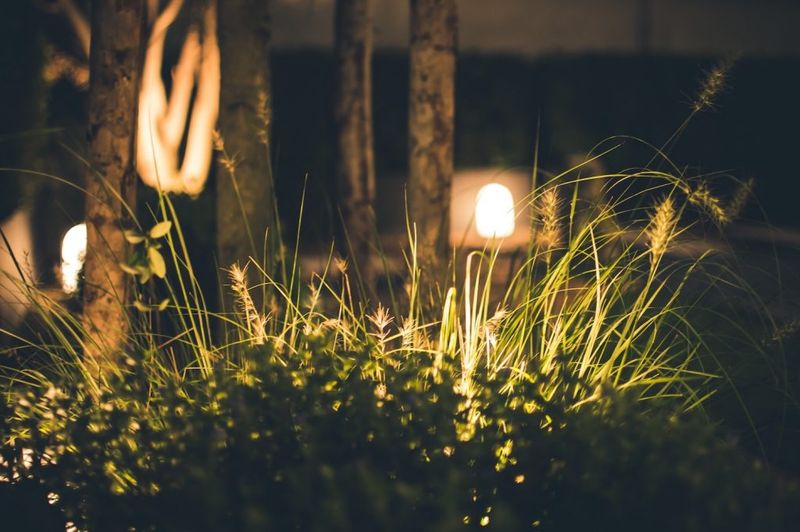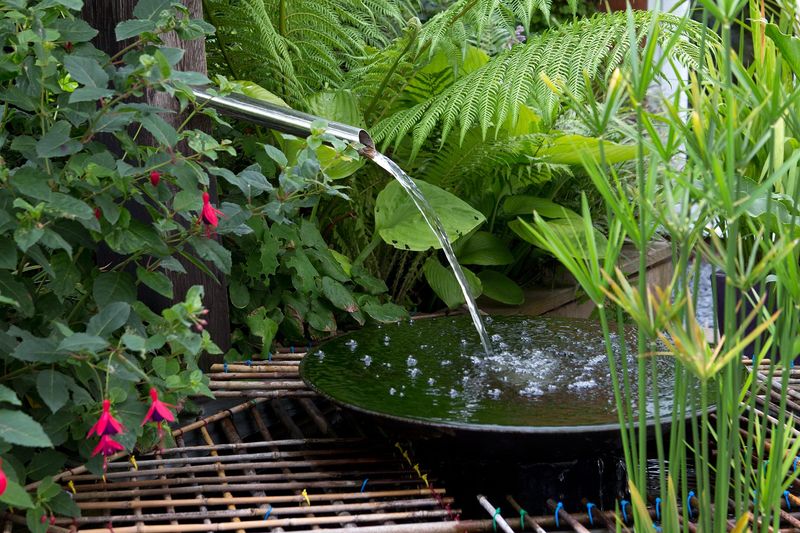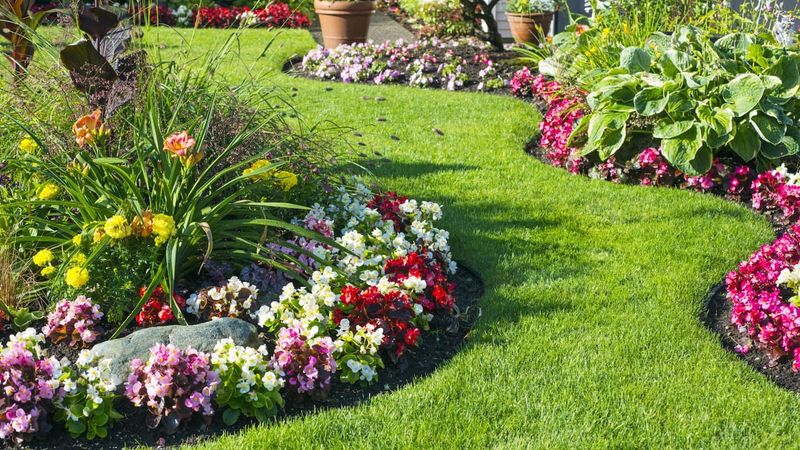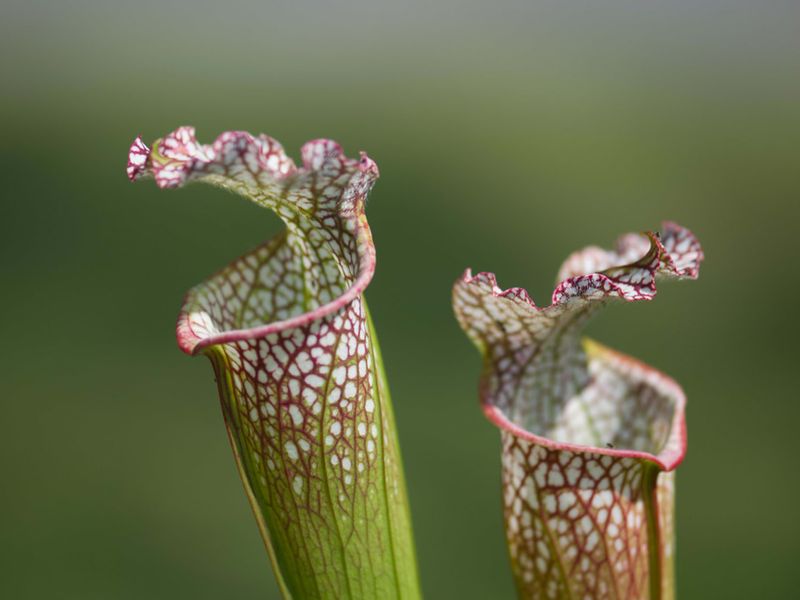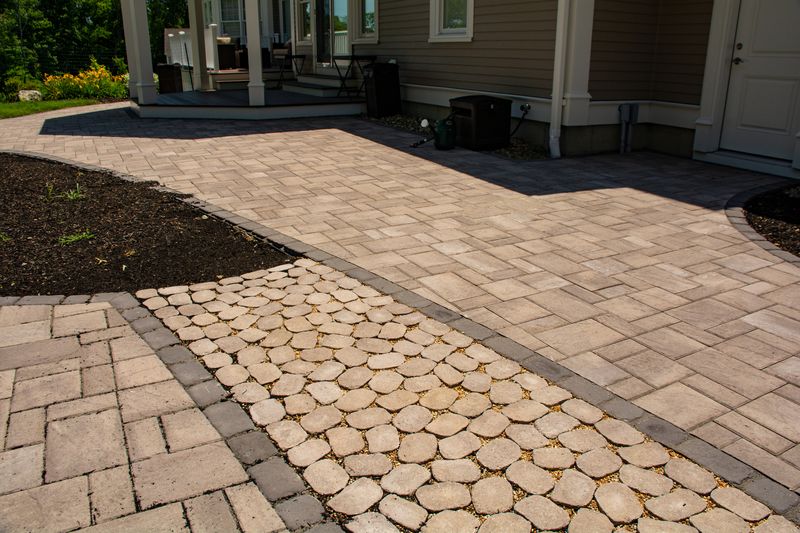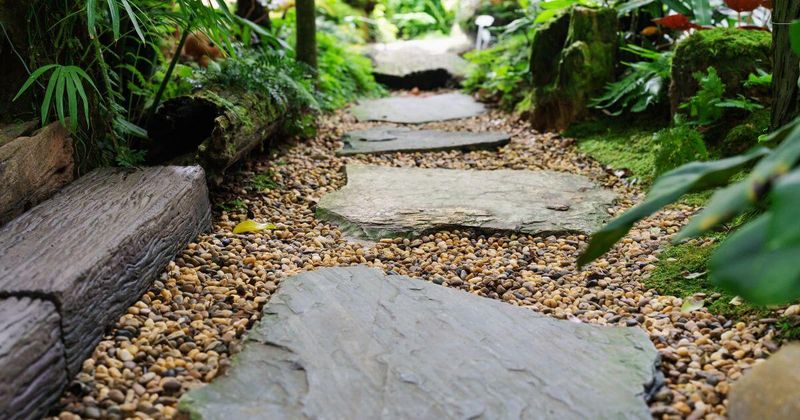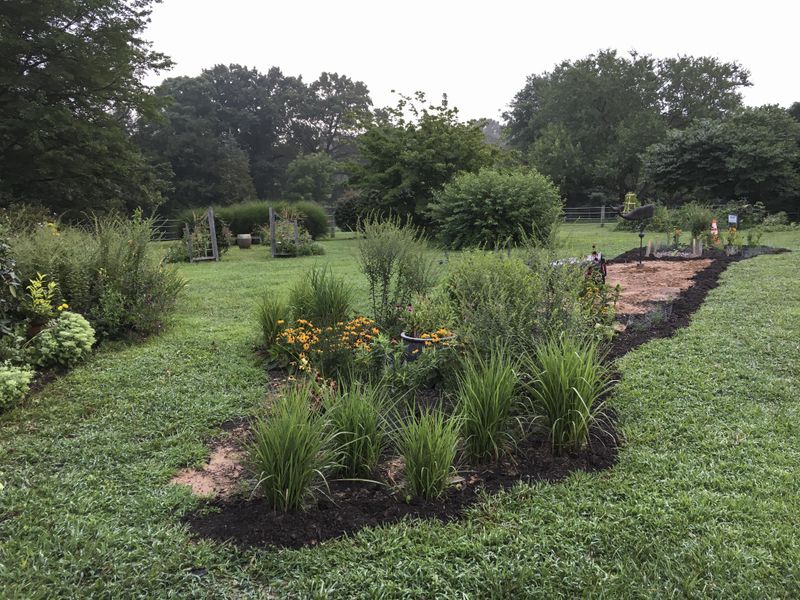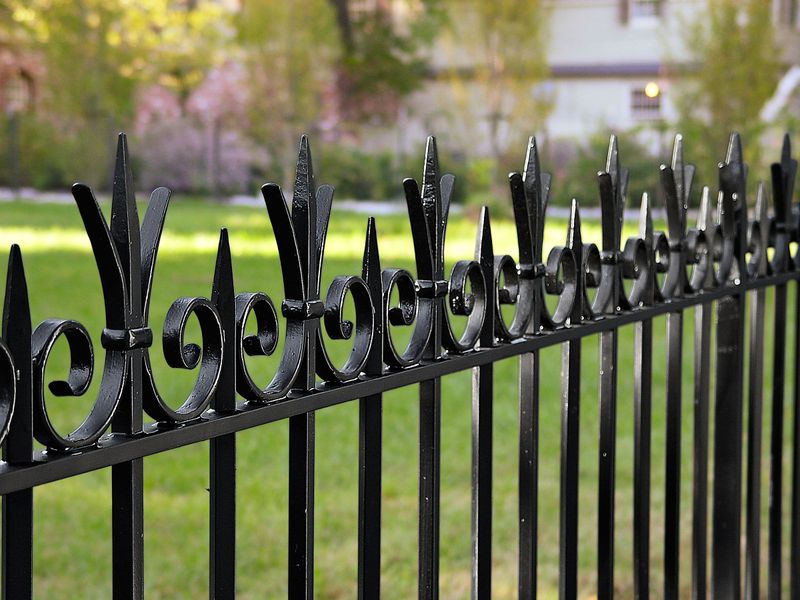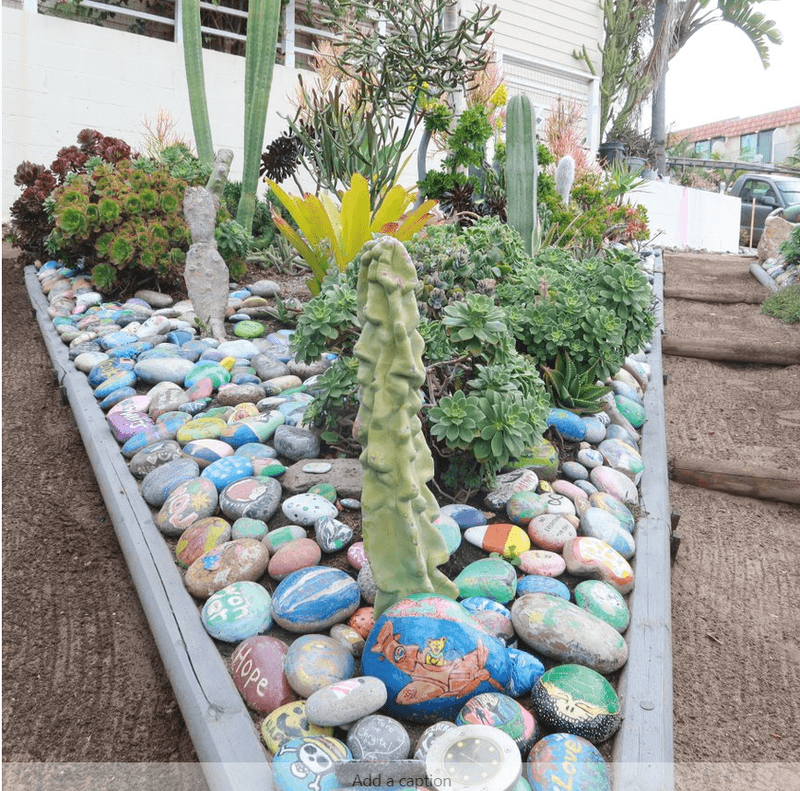Sometimes those beautiful features we love might be doing more harm than good, especially when it comes to local wildlife. I’ve definitely been guilty of this myself, adding things purely for looks without realizing how they might affect the creatures sharing the space.
Some design choices can actually confuse, trap, or deter birds, insects, and other helpful visitors. But the good news is that small changes can make a big difference. A garden can be both stunning and safe for wildlife—we just need to be a little more intentional.
We’ll look at 17 common garden features that could be causing more harm than we realize. Along the way, I’ll share simple, thoughtful swaps you can make to keep your garden a welcoming haven—for you and the wildlife you want to support.
1. Artificial Turf
This one seems like a low-maintenance solution for busy homeowners, but it can create a sterile environment. Beneath the green surface, insects and small mammals struggle as the turf provides no real habitat. The lack of natural soil also affects drainage and soil health.
People often choose synthetic grass to avoid mowing and watering, but it leads to overheated patches that repel birds and insects alike.
Consider replacing small sections with native ground covers. These provide a more inviting habitat while reducing water and maintenance needs. A mixed approach offers both visual appeal and environmental benefits.
2. Reflective Windows
Reflective windows amplify natural light in a garden, but they’re a known hazard for birds. The illusion of open space often leads to bird collisions, sometimes resulting in serious injury or death. Gardeners adore the way reflective windows make their outdoor space look larger.
However, simple solutions like window decals or external shutters can minimize these hazards. By breaking up the reflection, you help birds recognize the barrier in time to change course.
This small adjustment maintains your view and keeps avian visitors safe, offering peace of mind.
3. Pesticide-Laden Plants
Pesticides help keep gardens amazing, but they often harm non-target species, including beneficial insects. Gardeners eager to see blooms might not realize the impact of these chemicals on pollinators like bees and butterflies.
Instead of reaching for chemical solutions, try organic alternatives or encourage natural pest control through companion planting.
Beneficial insects are more likely to thrive in these environments, supporting the garden’s ecosystem. A little patience and knowledge make for a healthier, more sustainable garden.
4. Bright Outdoor Lighting
These create an enchanting atmosphere but contribute significantly to light pollution. This disrupts nocturnal wildlife by interfering with their natural cycles. Many homeowners install these lights for safety and aesthetics, not realizing the broader consequences.
Switching to motion-activated or lower-intensity lighting reduces disruption while maintaining security. Consider using warm-colored bulbs, as they are less intrusive to wildlife.
These slight modifications can make a big difference, fostering a garden that’s both safe and wildlife-friendly.
5. Water Features With Chlorine
Water features add peace to any garden, but chlorine-treated ones can be harmful to wildlife. Chlorine is often used to keep water clean, but it negatively impacts amphibians and insects that rely on these water bodies.
Gardeners might not realize that non-chemical solutions, like UV filters or aquatic plants, can maintain clear water without harming local fauna. These options support a healthier, more balanced ecosystem.
By choosing eco-friendly water treatments, you can enjoy your water feature without worrying about its impact on wildlife.
6. Plastic Garden Borders
Plastic garden borders provide a neat, defined look but often fragment habitats. They create barriers to small creatures, disrupting their natural movement. Gardeners prefer these for their durability and clean appearance.
Go for natural materials like stones or logs, which blend seamlessly into the environment. These alternatives provide safe passageways for wildlife while maintaining order in the garden.
Making small changes in your garden’s design can greatly enhance its ecological value without sacrificing aesthetics.
7. Exotic Plants
These plants bring a unique flair to gardens but often outcompete native species, disrupting local ecosystems. Gardeners may be drawn to their striking appearance, not realizing their potential to colonize and dominate.
Replacing exotics with native plants fosters a more balanced ecosystem. Native flora supports local fauna, enhancing biodiversity and resilience.
This shift not only preserves the garden’s beauty but also its ecological integrity, creating a space that thrives naturally.
8. Smooth Stone Pathways
Smooth stone pathways look elegant but can create challenges for local wildlife. The hard surfaces can be difficult for creatures to navigate, disrupting their natural pathways. Garden enthusiasts might choose them for their sleek, modern appearance.
Consider using gravel or mulch, which is softer and provides better traction for small creatures. These materials are also more forgiving, allowing plant life to thrive around them.
Such thoughtful changes enhance accessibility for wildlife without compromising your garden’s stylish appeal.
9. Synthetic Fertilizers
These promise rapid growth but often degrade soil health over time. They may leach into water supplies, impacting local ecosystems. Gardeners eager for growth might not see these long-term effects.
Switching to compost or organic fertilizers can enrich the soil naturally. These options support microbial life and create a more sustainable growth cycle.
Balancing immediate garden needs with environmental considerations leads to a healthier, more resilient garden space.
10. Concrete Patios
Concrete patios offer durability but lack permeability, affecting local hydrology and wildlife. They prevent water from soaking into the ground, impacting plants and animals reliant on natural water processes.
Consider alternatives like permeable paving or natural stone, which allow water movement and support local fauna. These options retain a modern feel while enhancing ecological function.
By integrating these solutions, gardens remain functional and environmentally conscious, respecting their natural surroundings.
11. Pea Gravel
This adds texture but can be harmful to wildlife. Its loose surface is difficult for small creatures to traverse, disrupting their movement and habitat.
Gardeners often choose it for its aesthetic appeal, unaware of its impact on local wildlife. Opting for larger stones or bark mulch provides a more stable surface for creatures, maintaining both beauty and function.
This simple change supports a more accessible environment for wildlife, enhancing the garden’s ecological value.
12. Treated Wood Structures
Treated wood structures are common in gardens for their durability but often contain chemicals harmful to wildlife and soil microbes. Homeowners might use them for pergolas or raised beds for their longevity.
Go for untreated or naturally resistant woods like cedar. These materials are safer for the environment and still offer longevity.
Such choices promote a healthier garden ecosystem without sacrificing the structural integrity of your outdoor features.
13. Concrete Statues
These provide focal points in gardens but can disrupt local ecosystems. They often block sunlight, affecting plant growth and the creatures that depend on those plants. Gardeners enjoy the aesthetic contrast these statues provide.
Consider using smaller, movable decorations that can be adjusted to accommodate surrounding growth. This flexibility helps maintain a dynamic, thriving garden ecosystem.
Balancing art with nature ensures your garden is both beautiful and beneficial to wildlife.
14. Non-Native Grass Lawns
These grass lawns require intensive care, often needing more water and chemicals than native alternatives. Gardeners value them for uniformity but may not realize their environmental toll.
Switching to native grasses reduces maintenance and supports local wildlife. These grasses require less water, adapt to local conditions, and enhance biodiversity.
Such a change fosters a more sustainable garden while preserving its visual appeal.
15. Metal Fencing
Metal fencing offers security and defines garden boundaries but can impede wildlife movement. Animals might find it difficult to cross, disrupting their natural territory.
Consider using natural barriers like hedges or wooden fences with gaps. These alternatives provide security while allowing wildlife to navigate freely.
By rethinking boundaries, you can maintain garden safety and harmony with nature.
16. Invasive Vines
Invasive vines grow rapidly, covering structures and plants alike. They can suffocate local flora, disrupting the balance of the garden ecosystem. Gardeners might appreciate their growth but overlook their aggressive nature.
Removing invasive vines and replacing them with native climbing plants helps restore ecological balance. Native species support local wildlife and integrate naturally into the garden.
Such choices enhance the garden’s beauty while preserving its environmental health.
17. Rock Gardens With Painted Stones
These add color but can be detrimental to local wildlife. The paint can chip off and leach into the soil, affecting plants and soil organisms. Gardeners enjoy the unique visual pop these add.
Opt for natural stones or biodegradable paints to reduce environmental impact. This preserves visual interest while promoting a healthier ecosystem.
By considering materials and their effects, your garden can remain beautiful and ecologically sound.




